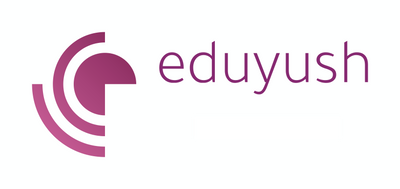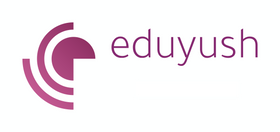PIP full form: Performance Improvement Plan
PIP Full Form: Complete Guide to Performance Improvement Plans
What is PIP Full Form?
PIP full form stands for Performance Improvement Plan. This formal document helps employees overcome performance challenges. Moreover, it creates a structured path toward workplace success. Additionally, PIPs serve as collaborative tools between managers and employees.
Furthermore, these plans effectively address specific performance gaps. Consequently, they provide clear expectations for improvement. Therefore, understanding the meaning of PIP becomes crucial for workplace success.
Understanding Performance Improvement Plans
Core Definition and Purpose
A Performance Improvement Plan represents a formal HR document. Additionally, it clearly outlines specific performance deficiencies. Furthermore, PIPs establish measurable improvement goals systematically.
Key components include:
- Clear performance expectations and standards
- Specific improvement objectives and timelines
- Required resources and support systems
- Regular monitoring and feedback mechanisms
- Consequences for non-compliance issues
Moreover, PIPs focus on employee development rather than punishment. Therefore, they create opportunities for professional growth.
When Are PIPs Implemented?
Performance improvement plans typically occur after informal discussions fail. Additionally, they effectively address recurring performance issues. Furthermore, managers implement PIPs when employees struggle consistently.
Common triggers include:
- Missing deadlines repeatedly and consistently
- Failing to meet quality standards regularly
- Struggling with job responsibilities continuously
- Receiving multiple performance warnings previously
- Exhibiting behavioral concerns in workplace.
Nevertheless, PIPs require careful consideration before implementation. Therefore, HR professionals assess each situation individually.
Types of Performance Issues Addressed
Performance-Related Challenges
PIPs effectively address various performance deficiencies in a systematic manner. Additionally, they target specific areas for improvement precisely. Furthermore, these plans tackle both quantitative and qualitative issues.
Performance areas covered:
- Productivity Issues: Low output levels and efficiency
- Quality Problems: Below-standard work delivery consistently
- Deadline Management: Chronic lateness and missed targets
- Skill Gaps: Technical competencies requiring development
- Communication Problems: Poor interpersonal workplace skills
Behavioral Concerns
Beyond performance metrics, PIPs also address behavioral issues. Additionally, they help modify problematic workplace behaviors. Furthermore, these plans promote positive attitude changes.
Behavioral aspects include:
- Attendance and punctuality improvement requirements
- Professional communication and collaboration skills
- Workplace etiquette and team cooperation
- Customer service and client interaction standards
- Leadership and management capability development.
PIP Implementation Process
Step 1: Documentation and Assessment
Initially, managers thoroughly document performance issues. Additionally, they gather evidence supporting their concerns. Furthermore, HR reviews all documentation for accuracy and completeness.
Documentation requirements:
- Specific performance incidents with dates
- Previous feedback conversations and outcomes
- Performance metrics and comparison data
- Witness statements when applicable
- Supporting evidence and relevant materials
Step 2: Goal Setting and Planning
Subsequently, clear improvement objectives are established collaboratively. Additionally, realistic timelines are set carefully. Furthermore, required resources are explicitly identified.
SMART goals framework:
- Specific: Clear, detailed performance expectations
- Measurable: Quantifiable success metrics and indicators
- Achievable: Realistic improvement targets within capabilities
- Relevant: Job-related performance improvement areas
- Time-bound: Defined deadlines and milestone dates
Step 3: Support and Resources
Consequently, adequate support systems are provided. Additionally, training opportunities are arranged systematically. Furthermore, mentoring relationships are established effectively.
Support mechanisms include:
- Additional training programs and skill development
- Regular coaching sessions with supervisors
- Mentorship opportunities with experienced colleagues
- Access to learning resources and materials • Modified workload during improvement period
PIP Duration and Timeline
Standard Duration Periods
Typically, PIPs last between 30 and 90 days. Additionally, the timeframe depends on the complexity of the improvement. Furthermore, some situations require extended periods of time.
Common timeframes:
- 30 days: Minor performance adjustments needed
- 60 days: Moderate skill development required
- 90 days: Comprehensive improvement programs necessary
- Extended periods: Complex behavioral changes required
Monitoring and Check-ins
Regular progress reviews occur throughout the process. Additionally, feedback sessions are held on a weekly or biweekly basis. Furthermore, adjustments are made when necessary.
Review schedule typically includes:
- Weekly one-on-one progress discussions
- Bi-weekly formal assessment meetings regularly
- Monthly comprehensive performance evaluations
- Milestone celebrations and recognition events
- Final assessment at completion deadline.
Employee Rights and Responsibilities
Employee Rights During PIP
Employees maintain specific rights throughout the process. Additionally, they deserve fair treatment and support. Furthermore, clear communication remains essential at all times.
Key rights include:
- Understanding specific improvement expectations clearly
- Receiving adequate support and resources
- Regular feedback and progress updates
- Fair assessment and evaluation processes
- Opportunity to provide input and feedback.
Employee Responsibilities
Simultaneously, employees must actively participate in the improvement process. Additionally, they should utilize provided resources effectively. Furthermore, consistent effort demonstrates commitment.
Core responsibilities:
- Actively working toward improvement goals
- Utilizing all provided support resources
- Communicating challenges and concerns promptly
- Documenting progress and achievements regularly
- Maintaining professional attitude throughout process
Common PIP Outcomes
Successful Completion
Many employees complete their PIPs. Additionally, they consistently demonstrate significant improvement. Furthermore, continued employment becomes possible.
Success indicators include:
- Meeting all established performance goals
- Sustained improvement over time consistently
- Positive feedback from supervisors regularly
- Enhanced confidence and job satisfaction
- Career advancement opportunities opening.
Alternative Outcomes
However, not all PIPs result in success. Additionally, some situations require different solutions. Furthermore, various alternatives exist appropriately.
Possible outcomes:
- Extension: Additional time for improvement
- Role modification: Job responsibility adjustments
- Transfer: Different position within organization
- Training programs: Enhanced skill development opportunities
- Employment termination: Final resort when necessary
Best Practices for PIP Success
For Managers and HR
Effective PIP management requires careful planning. Additionally, consistent support is always essential. Furthermore, fair treatment ensures positive outcomes.
Management best practices:
- Set realistic and achievable improvement goals
- Provide regular feedback and guidance consistently
- Offer necessary resources and support systems
- Document all interactions and progress accurately
- Maintain positive and encouraging attitude
For Employees
Employee engagement significantly impacts PIP success. Additionally, proactive participation demonstrates a clear commitment. Furthermore, utilizing available resources proves beneficial.
Employee success strategies:
- Take ownership of improvement process actively
- Ask questions and seek clarification regularly
- Utilize all provided training and resources
- Communicate progress and challenges openly
- Maintain professional attitude throughout journey
Legal Considerations and Compliance
Documentation Requirements
Proper documentation protects both parties involved. Additionally, it ensures consistent legal compliance. Furthermore, detailed records support fair processes.
Essential documentation:
- Original performance issues and evidence
- PIP goals and expectations clearly stated
- All meetings and conversation records
- Progress updates and assessment results
- outcomes and decision rationale
Anti-Discrimination Measures
PIPs must comply with employment laws. Additionally, they should avoid discriminatory practices. Furthermore, fair treatment ensures legal protection.
Compliance considerations:
- Equal treatment regardless of protected characteristics
- Reasonable accommodations for disabilities when needed
- Consistent application across all employees
- Regular legal review and updates
- Training for managers on proper procedures
Frequently Asked Questions
Is PIP a Disciplinary Action?
No, PIPs are not disciplinary actions formally. Additionally, they focus on improvement opportunities. Furthermore, they provide support rather than punishment.
Can Employees Refuse a PIP?
Employees can decline PIP participation technically. However, refusal may lead to disciplinary action. Additionally, cooperation demonstrates commitment to improvement.
What Happens After PIP Completion?
Successful completion typically results in continued employment. Additionally, regular monitoring may continue temporarily. Furthermore, career development opportunities often follow.
Can PIPs Lead to Termination?
Yes, unsuccessful PIPs may result in termination. However, this occurs only after fair process. Additionally, alternative solutions are explored first.
Conclusion
PIP full form, Performance Improvement Plan, represents a valuable HR tool. Additionally, it provides structured improvement opportunities effectively. Furthermore, successful implementation benefits both employees and organizations.
Understanding the meaning and process of PIP helps everyone involved. Moreover, proper implementation ensures fair and effective outcomes. Therefore, PIPs serve as bridges to workplace success.
Remember, PIPs focus on development rather than discipline. Additionally, they create pathways for professional growth. Furthermore, collaborative approaches consistently yield the best results.
Other Popular Full forms like PIP Full form
Full form Questions? Answers.
A full form is the expansion of a shortened or abbreviated form of a word or phrase. It is the complete version of a word or phrase, written out in its entirety. Full forms are often used to help clarify the meaning of acronyms or initialisms, which are shortened forms of words or phrases that are pronounced as individual letters (e.g., FBI, which stands for Federal Bureau of Investigation). Full forms can also be used to provide more information about a word or phrase, or to distinguish between similar words or phrases that have different meanings. For example, the full form of "FAQ" is "Frequently Asked Questions," and the full form of "URL" is "Uniform Resource Locator."
Yes, you can use full forms in an office setting. In general, it is a good idea to use full forms when you are introducing a new acronym or initialism to your audience, or when the acronym or initialism may be unfamiliar or may be interpreted differently by different people.
However, it is also important to consider your audience and the context when deciding whether to use full forms or acronyms or initialisms, as using full forms too frequently can make text longer and more difficult to read.
There are no hard and fast rules for when to use full forms and when to use acronyms or initialisms. However, it is generally a good idea to use full forms when you are introducing a new acronym or initialism to your audience, or when the acronym or initialism may be unfamiliar or may be interpreted differently by different people.
The best way to use full forms on social media is to use them sparingly and to use acronyms or initialisms whenever possible, while also considering your audience and using formatting to make the full forms easier to read.
Using full forms can improve your writing by providing more context and detail, making your text clearer and more precise, and helping to eliminate confusion or misunderstandings.
The benefits of using full forms in terms of clarity include providing more context and detail about the meaning of a word or phrase, helping to eliminate confusion or misunderstandings, and making written communication more precise.
One benefit of using full forms in terms of organization is that it can help ensure consistency in written communication by specifying the use of full forms for certain acronyms or initialisms. This can help avoid confusion or misunderstandings about the meaning of words or phrases.
Using full forms can improve productivity by saving time spent on reading and understanding abbreviations, and by reducing the risk of confusion or misunderstanding due to different people using different abbreviations.
We list down popular full forms with detailed explanations. Click on the link to read













Leave a comment